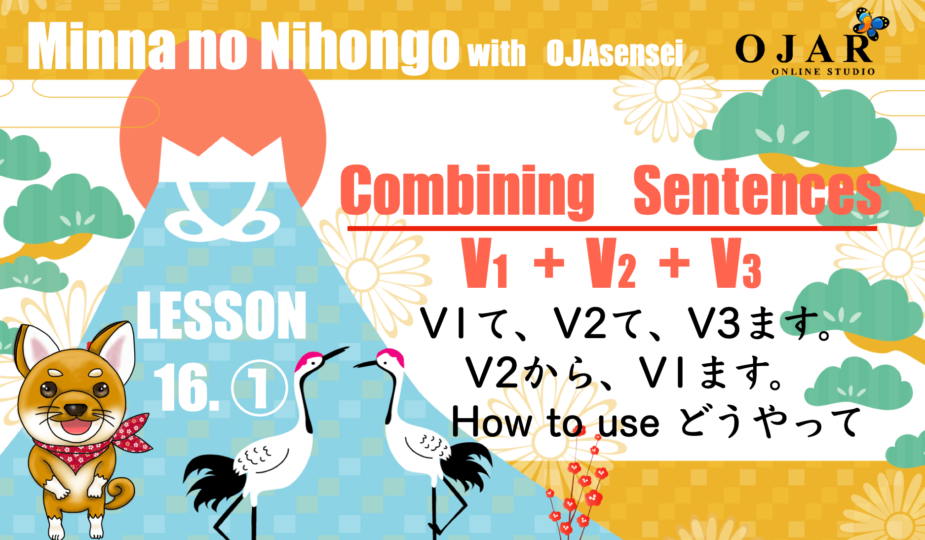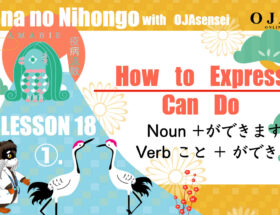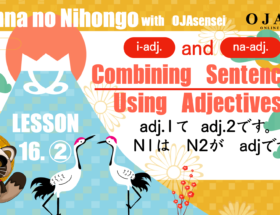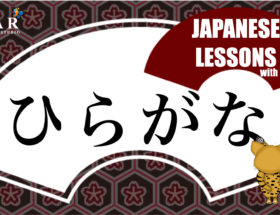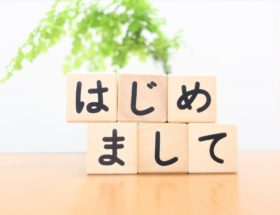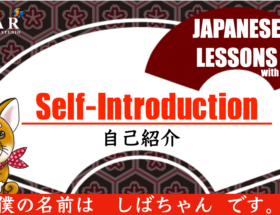こんにちは、みなさん おじゃちゃんです。
Today is “Minna no Nihongo lesson 16 ① : Combining Sentences “V1 (te-form) + V2 (te-form) + V3 (masu-form)”. You are probably eager to improve your Japanese more. You can combine the sentences “How to combine verbs” and “How to combine sentences using AFTER”.
Let’s get started!
Minna No Nihongo: Beginner 1, 2nd Edition (Japanese)
Customer Reviews:★★★★☆
Publisher : 3A CORPORATION; 2nd Edition (March 16, 1998)
CONTENTS
■ Combining Sentences in Each Tense
As I told you in “te-form is very easy!”, you can combine words and words and phrases and phrases with te-form verb.
You can learn how to combine more than 2 sentences here. You can use this form when you want to say “I V1, V2 and V3”.
・Combining Sentences in the Future Tense
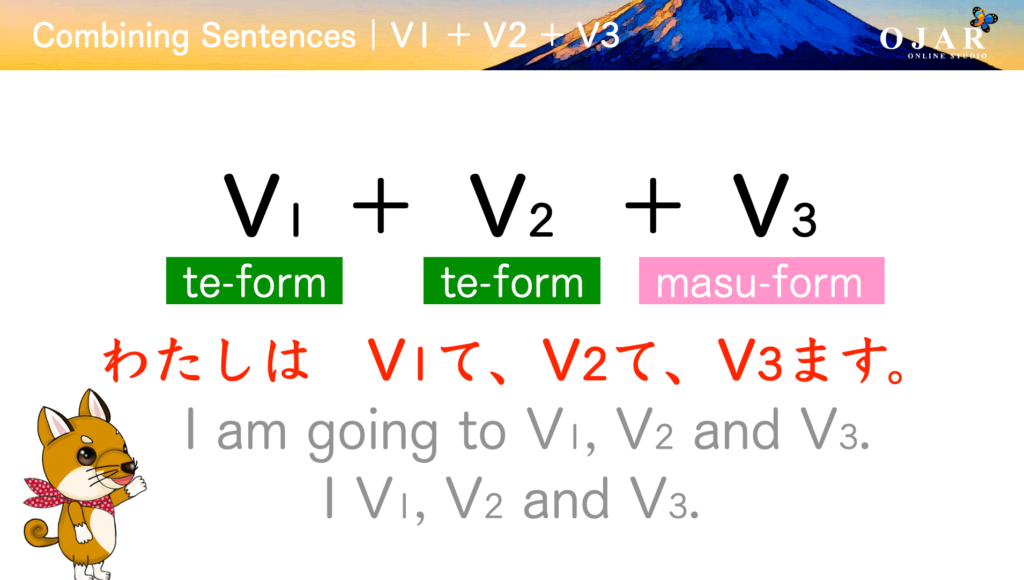
Let’s talk about your future plan.
V1:
わたしは 仕事をします。
watashi wa shigoto wo shimasu
I’m going to work.
HINT!
仕事をする → 仕事をして (te-form)
V2:
わたしは 料理をします。
watashi wa ryouri wo shimasu
I’m going to cook.
HINT!
料理をする → 料理をして (te-form)
V3:
わたしは 10時に 寝ます。
watashi wa juuji ni nemasu
I’m going to sleep at 10.
HINT!
寝る → 寝ます (masu-form)
V1 + V2 + V3:
わたしは 仕事をして、料理をして、10時に 寝ます。
watashi wa shigotowoshite ryouriwoshite juuji ni nemasu
I’m going to work, cook and sleep at 10.
・Combining Sentences in the Present Tense
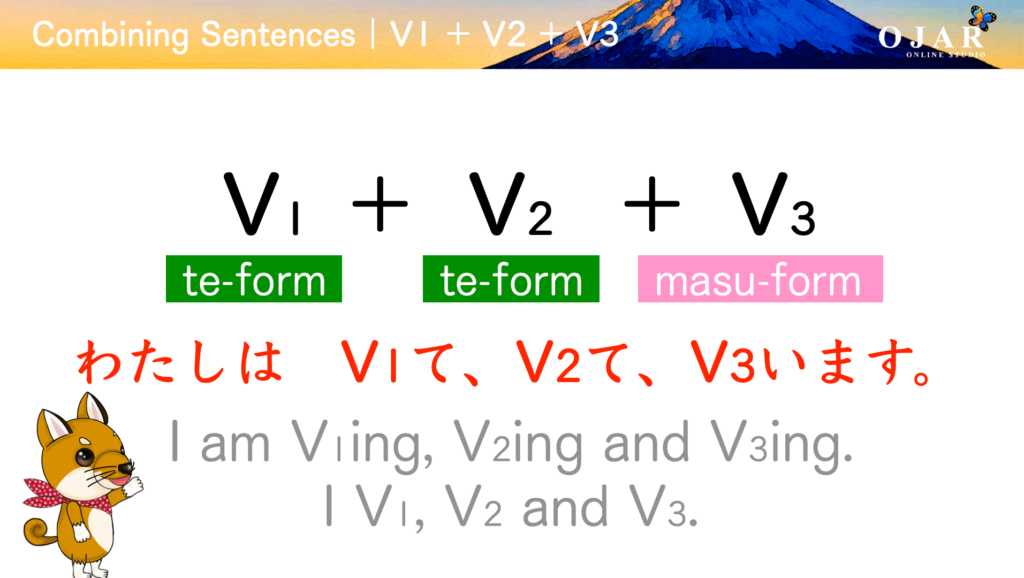
Let’s talk what you are doing now with previous lesson, “te-form + imasu”.
V1:
わたしは ブログを 読んでいます。
watashi wa burofu wo yonde imasu
I am reading the blog.
V2:
わたしは 日本語を 勉強しています。
watashi wa nihongo wo benkyou shiteimasu
I am studying Japanese.
V1 + V2:
わたしは ブログを 読んで、日本語を 勉強しています。
watashi wa burogu wo yonde nihongo wo benkyou shiteimasu
I am reading the blog and studying Japanese.
PLUS!
If you want to express multitasking, you can use “ながら while” that you are going to learn later.
・Combining Sentences in the Past Tense
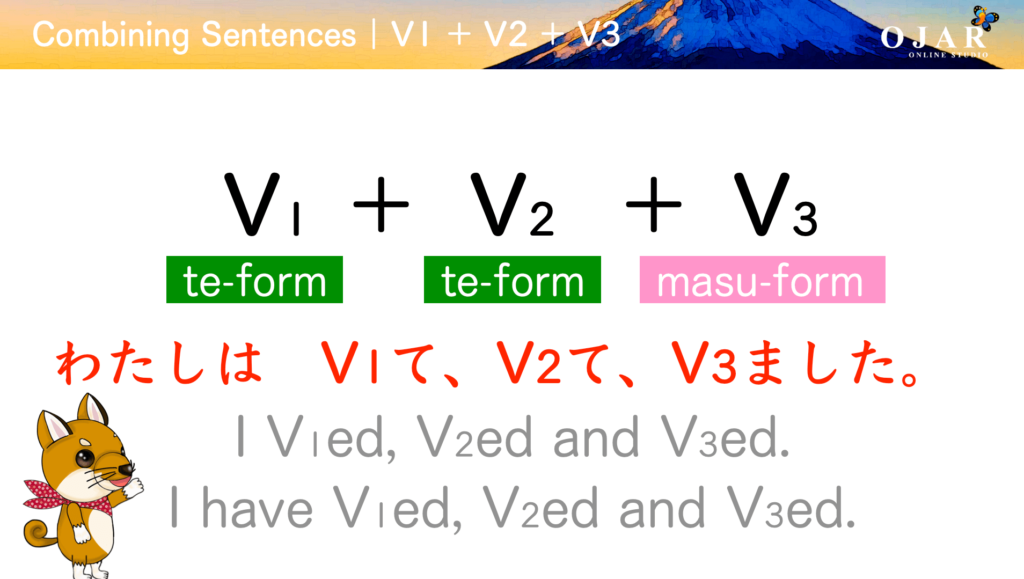
Let’s talk what you did before.
V1:
昨日 学校に 行きました。
kinou gakkou ni ikimashita
I went school yesterday.
HINT!
行く→ 行って (te-form)
V2:
友達に 会いました。
tomodachi ni aimashita
I saw my friends.
HINT!
会う →会って (te-form)
V3:
友達と 話しました。
tomodachi to hanashimashita
I talked with my friends.
HINT!
話す → 話しました (te-form)
V1 + V2 + V3:
昨日 学校に 行って、友達に 会って、話しました。
kinou gakkou ni itte tomodachi ni atte hanashimashita
I went school, saw my friends and talked with them yesterday.
POINT!
You can omit “友達” in the V3 sentence.
Combining Sentences | Exercise 1.
■ Combining Sentences Using AFTER “V2 + から + V1”
The big difference between Japanese and English is that the word order is totally reversed. You can make it clear what you do after doing something with “V2 (te-form) + から + V1(masu-form)”.
・Combining Sentences in the Future Tense | V2 + から + V1
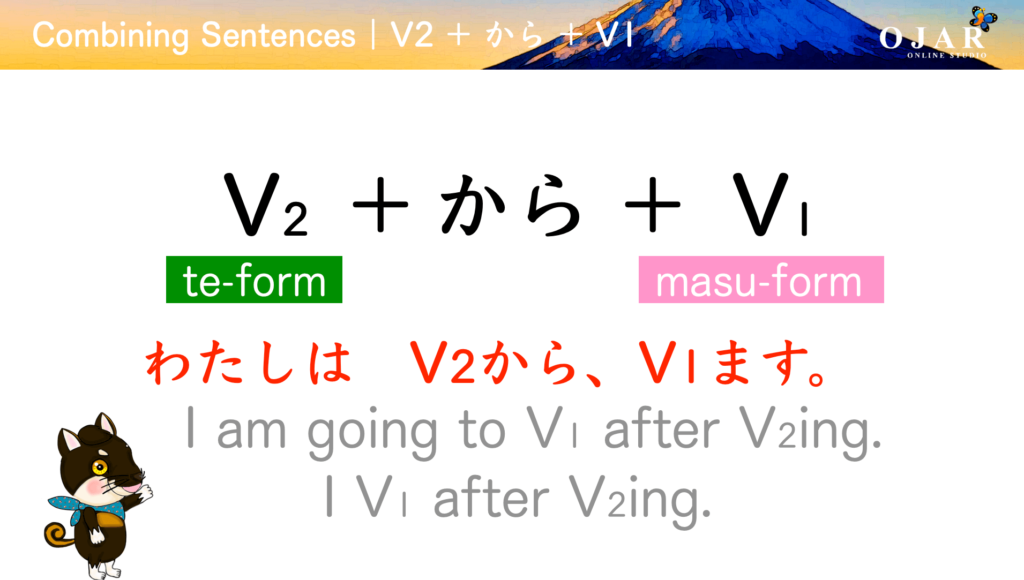
Let’s talk about your future plan.
V1:
わたしは 図書館で 勉強します。
watashi wa toshokan de benkyoushimasu
I’m going to study in the library.
V2:
わたしは 学校に 行きます。
watashi wa gakkou ni ikimasu
I’m going to go to school.
HINT!
行く → 行って (te-form)
V2 + から + V1:
わたしは 学校に 行って から、図書館で 勉強します。
watashi wa gakkou ni itte kara toshokan de benkyoushimasu
I’m going to study in the library after going to school.
・Combining Sentences in the Present Tense | V2 + から + V1
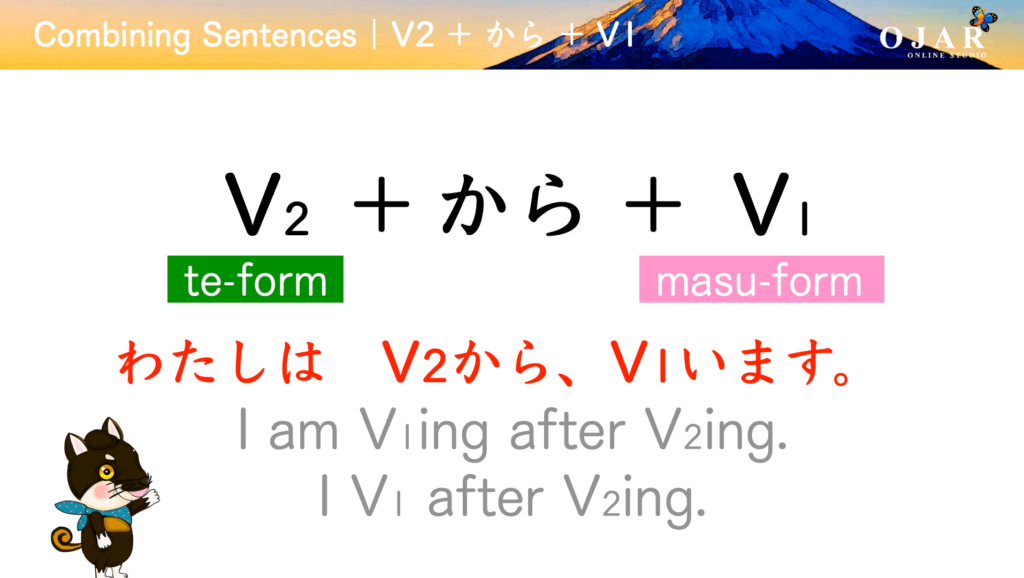
Let’s talk about your present progressing action.
V1:
わたしは シャワーを 浴びています。
watashi wa shawaa wo abiteimasu
I take a shower.
V2:
わたしは 毎日 公園で 走っています。
watashi wa mainichi kouen de hashitteimasu
I run in the park everyday.
V2 + から + V1:
わたしは 毎日 公園で 走って から、シャワーを 浴びています。
watashi wa mainichi kouen de hashitte kara shawaa wo abiteimasu
I take a shower after running in the park everyday.
・Combining Sentences in the Past Tense | V2 + から + V1
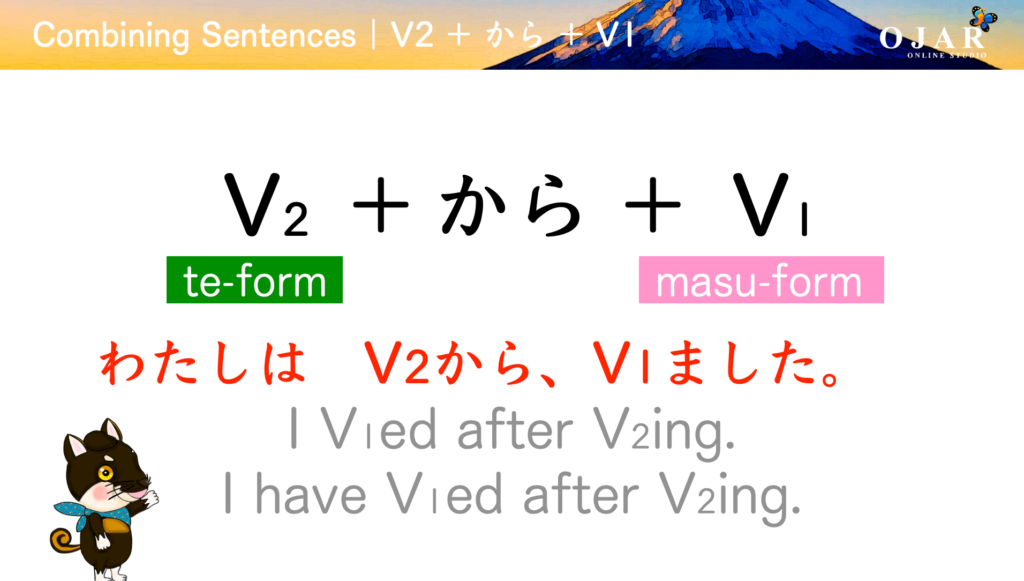
Let’s talk about you past action.
V1:
わたしは 宿題を しました。
watashi wa shukudai wo shimashita
I did my homework.
V2:
わたしは 家に 帰りました。
watashi wa ie ni kaerimashita
I went back my home.
HINT!
帰る → 帰って (te-form)
V2 + から + V1:
わたしは 家に 帰って から、宿題をしました。
watashi wa ie ni kaette kara shukudai wo shimasita
I did my homework after I got home.
Combining Sentences | Exercise 2.
■ Do you know how to use “どうやって” ?
You can use “どうやって douyatte” when you ask the way or the mean.
・Asking for the way
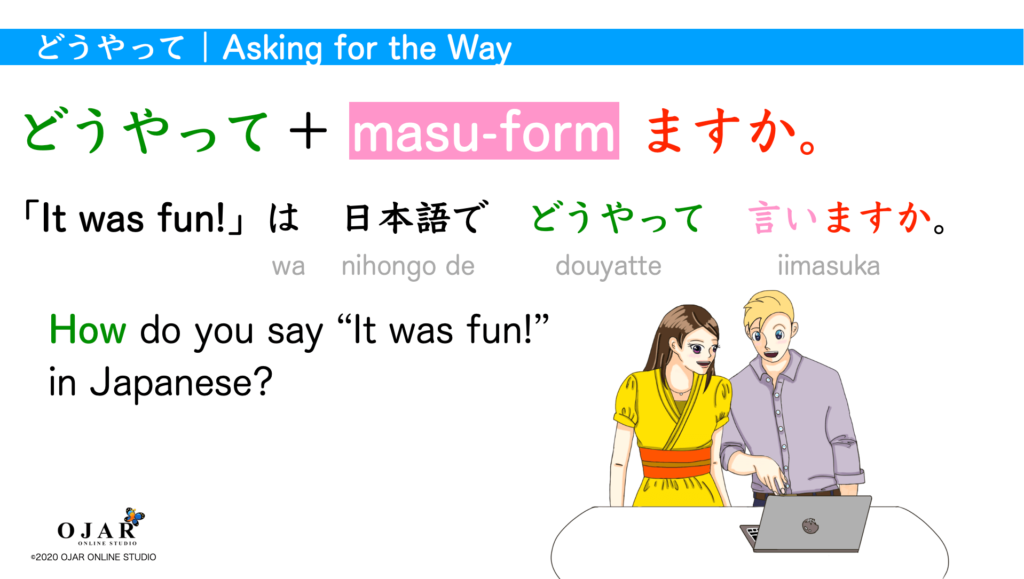
「楽しかった!」と 日本語で 言います。
tanoshikatta to nihongo de iimasu
It’s “楽しかった” in Japanese.
・Asking for the mean
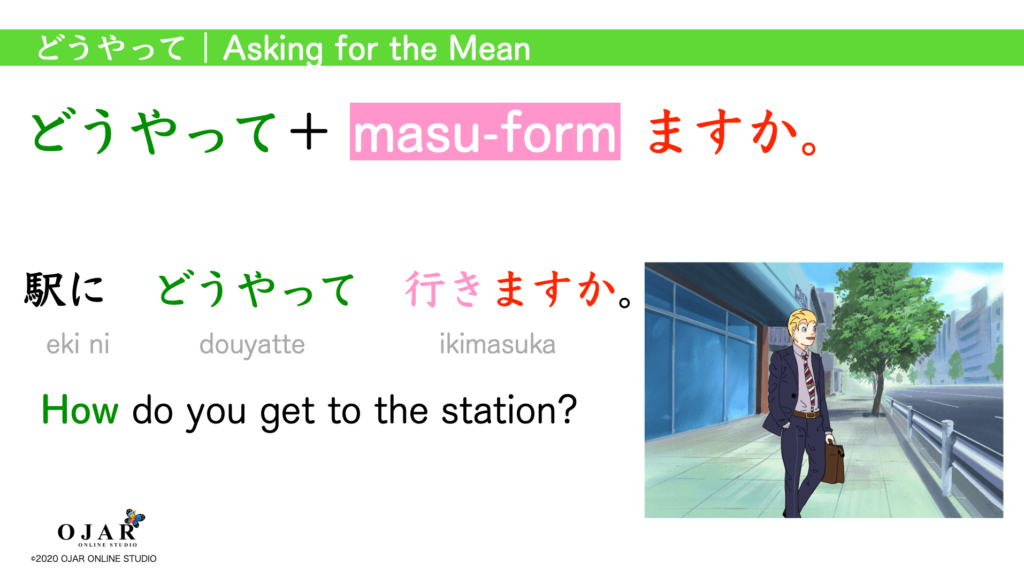
タクシーで 行きます。
takushii de ikimasu
I’ll take a taxi.
CAUTION!
When you want to ask the listener “Could you tell me how to get to the station?”, you can use; 駅に どうやって 行けますか。
Combining Sentences Homework
Translate these English into Japanese.
① How do you read this kanji?
② How do you use this?
Okay, that’s all for today!
Good luck with your Japanese study.🐶🍀
Minna No Nihongo: Beginner 1, 2nd Edition (Japanese)
Customer Reviews:★★★★☆
Publisher : 3A CORPORATION; 2nd Edition (March 16, 1998)
THE NEXT LESSON is:
Minna no Nihongo 16 ② Combining Sentences Using Adjectives
THE PREVIOUS LESSON is:
Minna no Nihongo 15 ② The Present Progress Form te-form + imasu

